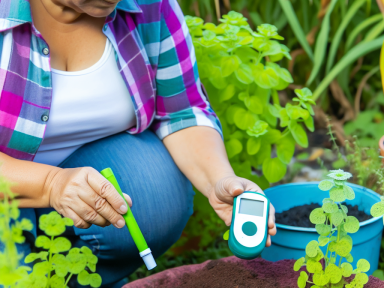The Secret to Perfect pH Balance in Your Soil
One of the keys to a thriving garden is maintaining the proper pH balance in your soil. Soil pH affects the availability of nutrients to plants and can significantly influence your gardening success. Here’s how to test and adjust your soil’s pH levels for optimal plant health and growth.
Understanding Soil pH
Soil pH is a measure of the acidity or alkalinity of the soil. It is measured on a scale from 0 to 14, with 7 being neutral. Most plants prefer a slightly acidic to neutral soil, with a pH range of 6.0 to 7.0. However, some plants have specific pH requirements outside this range.
Step 1: Testing Your Soil pH
To determine your soil’s pH, you can use one of the following methods:
- Home Testing Kits: These kits are widely available at garden centers and are easy to use. Simply follow the instructions provided with the kit. Generally, this involves mixing a soil sample with a testing solution and comparing the color change to a pH scale.
- Electronic pH Meters: These are more accurate and reusable. Insert the meter probe into the soil and read the pH level on the digital display.
- Professional Laboratory Tests: For the most precise results, consider sending a soil sample to a local agricultural extension office or professional laboratory. They will provide a detailed report on your soil’s pH and nutrient levels.
Step 2: Adjusting Soil pH
Based on your test results, you may need to adjust the pH of your soil. Here’s how to do it:
Lowering Soil pH (Increasing Acidity)
If your soil is too alkaline (pH above 7.0), you can lower the pH using one of the following methods:
- Sulfur: Elemental sulfur or aluminum sulfate can be used to acidify the soil. Apply according to the instructions on the package. Be patient, as sulfur takes time to react with the soil.
- Organic Matter: Incorporating organic materials such as peat moss, composted leaves, or pine needles can gradually lower soil pH over time.
- Acidic Mulches: Using mulch made from materials like pine bark or sawdust can also help acidify the soil slowly.
Raising Soil pH (Decreasing Acidity)
If your soil is too acidic (pH below 6.0), you can raise the pH using the following methods:
- Lime: Ground limestone (calcium carbonate) is the most common way to increase soil pH. Apply dolomitic lime if your soil also needs magnesium. Follow the application rates provided on the packaging.
- Wood Ashes: If used in moderation, wood ashes can help raise soil pH. Be cautious with the amount, as excessive use can lead to nutrient imbalances. Sprinkle lightly and mix well into the soil.
Step 3: Monitoring and Maintenance
After adjusting the pH, it’s essential to retest your soil periodically to ensure it stays within the optimal range. Regular monitoring allows for timely corrections and helps maintain a balanced environment for your plants.
Incorporate these pH balance techniques into your gardening routine and watch your plants thrive like never before. A well-balanced soil pH ensures your plants have access to all the essential nutrients they need for robust growth and bountiful harvests.




GIPHY App Key not set. Please check settings